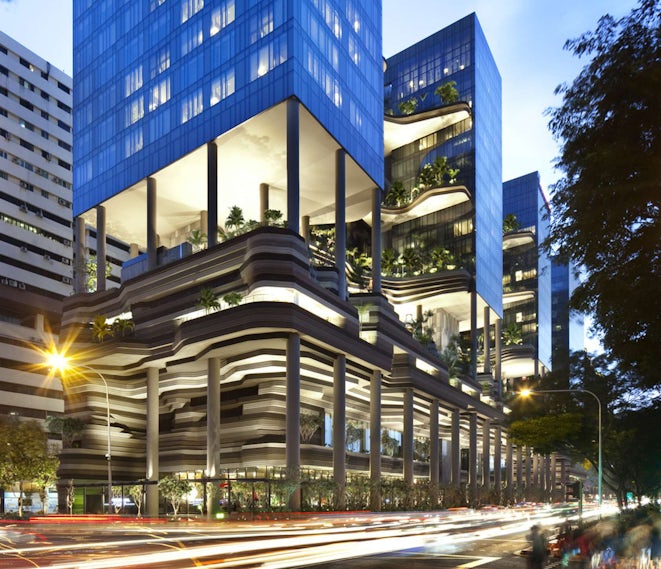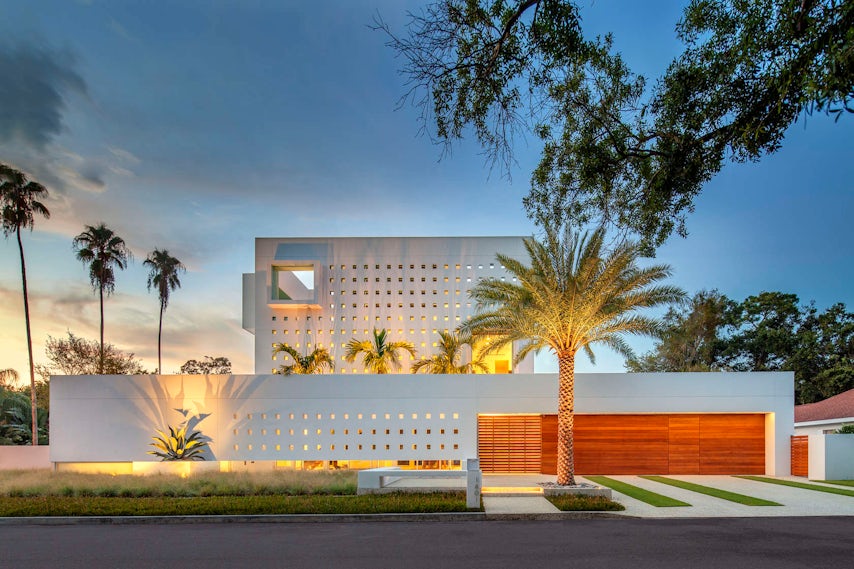In the recent past, outdoor space in high-rise buildings has gone from being called “roof decks” and “balconies” to “sky gardens” and “sky parks.” The real estate branding potential in the “sky” part of the label is obvious, but a more significant shift is evident in the choice of the second word, as it denotes a change from private or utilitarian space to something more publicly accessible.
Despite most spaces proliferating the “sky” moniker being found in commercial or hospitality settings (therefore lacking true publicness), we’re witnessing an unprecedented rise in widely accessible, large-scale outdoor space occurring above the ground. However nascent, this trend is important to architects because it represents the emergence of a brand-new type of space, previously dreamed and theorized about but only recently becoming widespread in the real world. The architects below, employing a variety of configurations in the designs of high-rise open space, are leading the way in this effort, further pushing our society into the sky by bringing the ground along with us.

Image via YouTube
Emilio Ambasz & Associates
Fukuoka Prefectural International Hall
Closest to the ground of the types shown here, a stepped building allows the easiest transition from street to sky by nature of its form, as its elemental configuration is unmistakably linked to the act of climbing. In that sense, Emilio Ambasz & Associates has demonstrated a logical first leap into the air by using the surface of its building as a host for the ground area it displaces. This type of form ensures a balanced compromise, providing valuable public open space on one side while maintaining a traditional commercial facade, desired by the client, on the other.
See also: Namba Parks by The Jerde Partnership

Toyo Ito & Associates
Well-suited to the verticality of a tower, a collection of gardens spiraling around a central core as they rise is a relatively simple modification to an off-the-shelf building type. Toyo Ito & Associates applied such a scheme to its CapitaGreen tower to provide a marketable amenity accessible to all tenants while also functioning as the primary component in the building’s air circulation system. Culminating in a rooftop park akin to a crown jewel, this distribution of open spaces is an opportunistic move both inside and out, wisely leveraging floor area that would otherwise be lost to leaseholders.
See also: G-Tower by HAEAHN Architecture; The Spiral by BIG

© Ronald Lu & Partners

© Ronald Lu & Partners
Ronald Lu and Partners
Academic 3, City University of Hong Kong
Placing green space on a single massive, raised horizontal plane, as RLP has done for the City University of Hong Kong, is the most direct way to replace the natural aspects of the ground a building covers. In Hong Kong, a city already accustomed to a pedestrian realm occurring at multiple vertical levels, the surface of this building was a sensible opportunity to link two portions of the university’s campus separated by a sharp level change. Adding intensive plantings to create a raised ground plane, whether for transit or amenity, was an advantageous use of the large floor plates desired by this institutional client, which necessitated what could easily have been left as a flat, inaccessible roof.
See also: UCSF Institute for Regeneration Medicine Building by Rafael Viñoly Architects; Transbay Transit Center by Pelli Clarke Pelli Architects

WOHA
There’s no more powerful a reminder that skyscrapers are clad with curtain walls than when one of them is pulled away; in this case to provide a series of outdoor floors for nearly half the height of a hotel. The notion that levels of a tower could just as easily be outside as they could be in is frequently overlooked due to the economic efficiency of a continuous envelope. But as the perceived worth of urban open space rises to astronomical heights, WOHA shows that features like these stripped-away garden floors may become more common in tomorrow’s high-rises, if for nothing more than the ease of access they offer to a group of sky-high occupants.

Safdie Architects
Sky Habitat and Marina Bay Sands
In two highly visible projects, Safdie Architects has made the notable move of connecting high-rise towers to each other with shared amenity spaces. A significant jump beyond something as flimsy as a skybridge, these spaces are integral to the structure of their towers, accommodating major program elements with large footprints. More remarkable than that is the degree of connection they provide between towers. Especially in Sky Habitat, where shared community spaces link two buildings three separate times along their vertical length, opportunities to move from one tower to the other are far more plentiful than in most multi-building complexes. Taking the inherent activities occurring at each link into account, which ensure these spaces function as more than mere corridors, it’s possible that interconnected skyscrapers may be the wave of the futureand that projects like these represent the beginning of a final step in the evolution of our rise into the sky.









